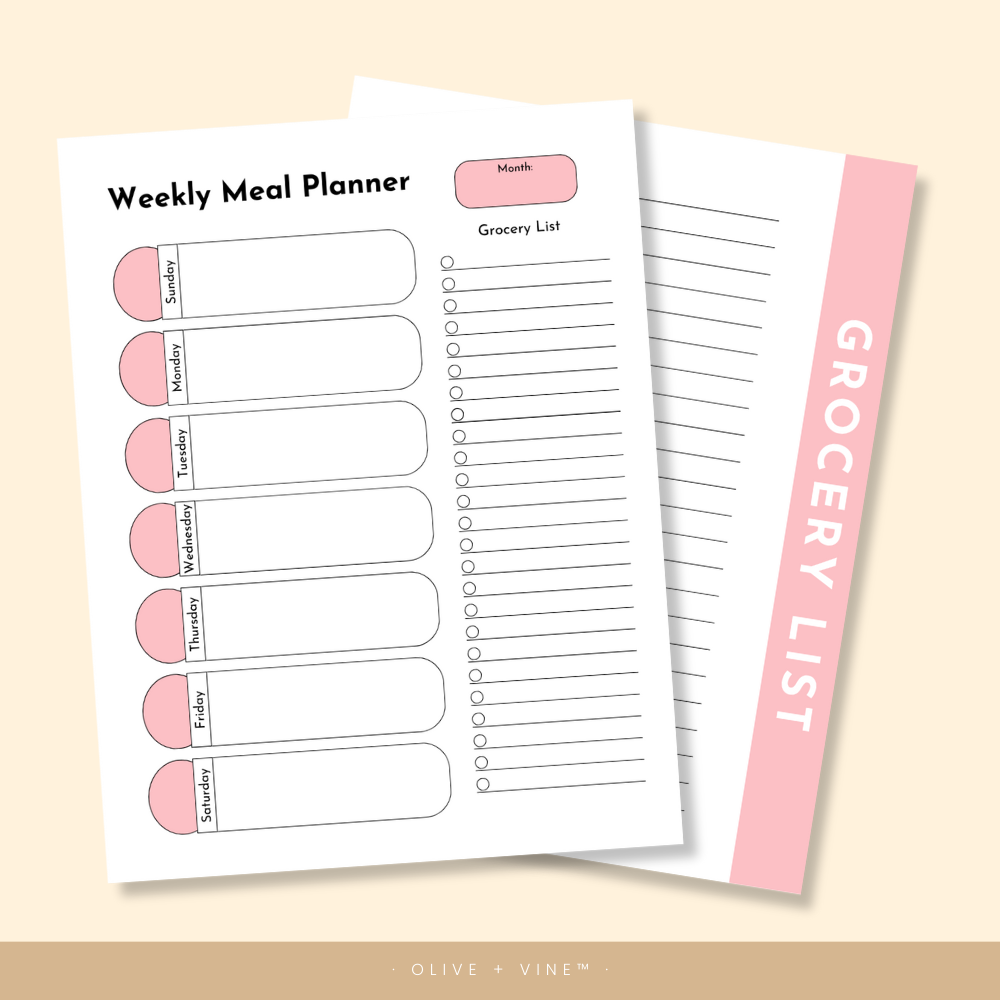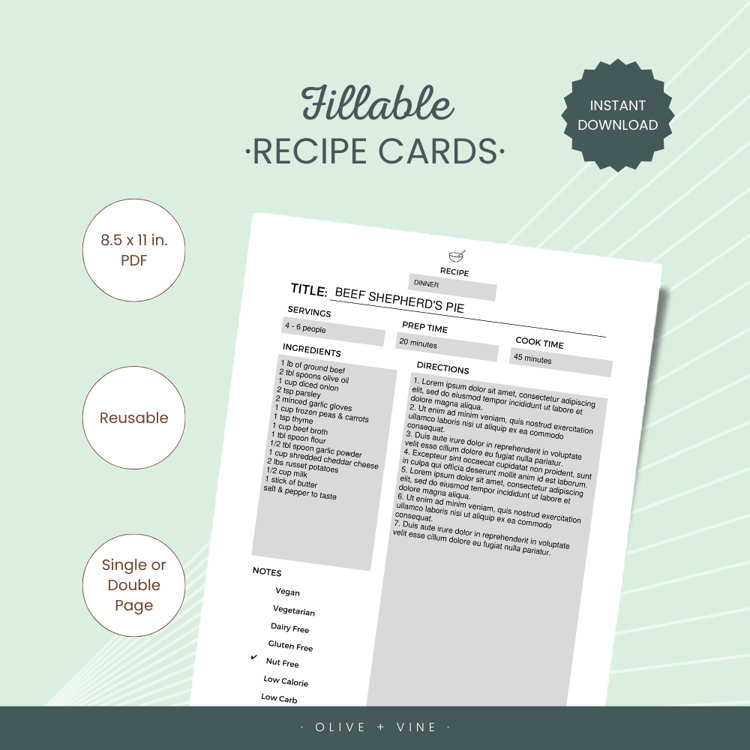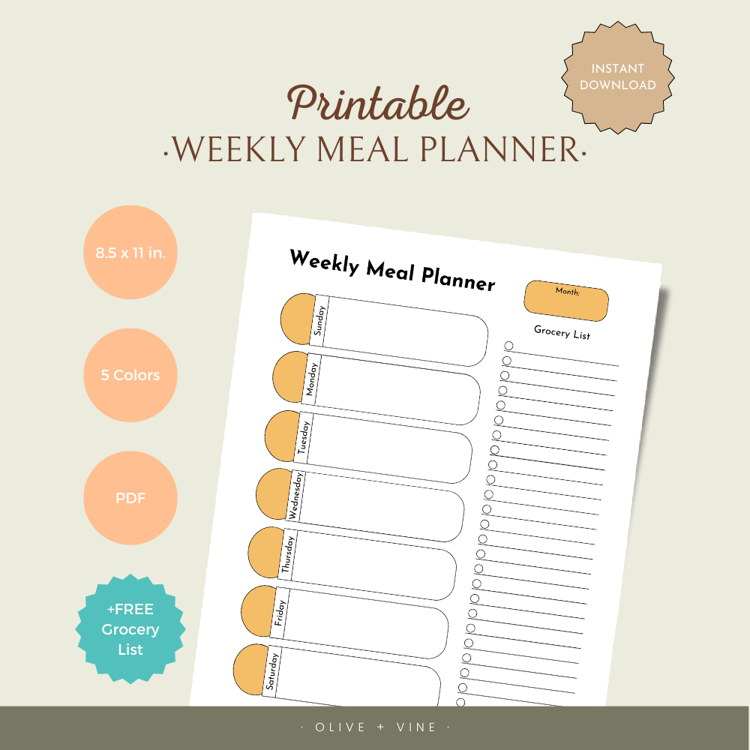Picture this:
It's 6pm, your kids are running around the house, and your husband will be home any minute.
You're standing in front of the fridge, frantically trying to figure out what to make for dinner. The pressure is on, and you don't want to serve the same old heartburn inducing takeout food again.
Meal planning can be a game-changer in this scenario.
But where do you start?
Well, pull up a chair and pour yourself a cup of coffee, because we've got some tips and tricks that are sure to make your life a little bit easier. In this blog post, you'll learn how to meal-plan for the whole family without breaking the bank.
Let's dive in!
Table of Contents
- Benefits of Meal Planning for Beginners
- How to Start Meal Planning
- Meal Planning Strategies
- Creating a Meal Plan
- Meal Planning and Grocery Shopping
- Start Your Meal Planning Journey Today
Benefits of Meal Planning for Beginners
You might be wondering what benefits meal planning can offer your family. After all, it probably seems like another boring (or even overwhelming) task to add to your to-do list. But in reality, it's a game-changer for your time, budget, and health.
Time-Saver
First and foremost, meal planning saves time! By taking the time to plan out your meals for the week, you eliminate the need for last-minute trips to the grocery store or endlessly scrolling through Pinterest looking for recipes. This allows you to spend more time with your family, and less time stressing about what to make for dinner.
Cost-Saver
In addition to time-saving benefits, meal planning can also save you money. When you plan your meals ahead of time, you can buy ingredients in bulk and take advantage of sales, ultimately reducing your grocery bill. If you’re like me, you may have noticed that grocery prices have surged by 12.4% since October 2021! So the next time you're at the grocery store, consider stocking up on pantry staples like rice, pasta, and canned goods to save yourself some dough (pun intended).
Health-Saver
Finally, meal planning promotes a healthier lifestyle. When you plan your meals in advance, you have the opportunity to make healthier choices and control portion sizes. This leads to a more balanced diet and can ultimately improve your family's overall health.
How to Start Meal Planning
I totally understand the struggle of trying to save money while keeping our families well-fed. That’s why I can confidently say even the most kitchen-challenged among us can reap the benefits of a solid meal planning routine. With a little bit of effort and some smart strategies, you can make it work for you. Here's how:
Steps to Follow
- Choose your meal planning method: There are various ways to approach meal planning, such as weekly or monthly planning, batch cooking, or theme-based meal plans. Choose the method that works best for you and your family.
- Take inventory of your pantry and fridge: Before you start planning, take a look at what you already have on hand. This will help you avoid buying unnecessary ingredients and save money.
- Plan your meals: Now for the fun part! Look for inspiration online, in cookbooks, or from family and friends. You can also take a look at the sales ad for your local grocery store and plan your meals around what’s on sale to get the most bang for your buck. Write down the meals you want to make for the week or month, and make sure to include a variety of proteins, vegetables, and grains.
- Make a grocery list: Based on your meal plan, make a list of the ingredients you need to buy. But here’s the clincher–stick to your list when shopping! There’s a reason why they say not to go shopping on an empty stomach 🤣! I know that fresh baked bread smells so good when you head to the bakery, but if it’s not on your list, ax it. You want to avoid impulse purchases as much as possible.
Tools and Resources
Here are some tools and resources that can help you streamline the planning process:
- Recipe Organizer Apps: These apps help you organize your favorite recipes all in one place, making it easier to plan your meals. You can easily search and save recipes, create grocery lists, and even share recipes with friends and family. Some popular recipe organizer apps include Paprika Recipe Manager, Yummly, and MealBoard.
- Printable checklists and planners: These tools can help you organize your shopping list, plan your meals for the week or month, and keep track of what you've already prepared. If you value a more hands-on approach, having a physical copy of your plan can definitely make it easier to stay on track and avoid last-minute fast food runs.
- Meal Planning Communities: Joining a meal planning community can be a great way to get inspiration and support for your meal planning journey. You get to connect with other like-minded individuals, share your own meal plans, and get feedback and suggestions. Examples of meal planning communities include Plan to Eat, Real Plans, and The Fresh 20.
- Meal Prep Delivery Services: If you’re short on time or simply don’t enjoy grocery shopping and meal prepping, consider using a meal prep delivery service. These services provide pre-made meals or meal kits that can be easily prepared at home. Many meal prep services offer customizable options to fit dietary restrictions or preferences. So if this allows you to be able to provide healthy and nourishing meals to your family, that’s a win in my book. Some popular meal prep delivery services include HelloFresh, Blue Apron, and Freshly.

Grab your weekly meal planner and grocery list!
Meal Planning Strategies
Obviously, meal planning isn't just about saving money. It's also about making your life easier and more efficient. That's why I recommend batch cooking and freezing leftovers.
Not only does this help stretch your food budget, but it also means you'll always have something on hand for those nights when you just don't feel like cooking. Plus, you get the bonus feeling of accomplishment that comes from having a fridge full of healthy options. *high-five!*
Weekly vs. Monthly Meal Planning
Depending on your schedule and lifestyle, you might prefer to plan your meals on a weekly or monthly basis. Here are some pros and cons of each approach to consider:
Weekly meal planning:
- Pros: Allows for more flexibility, easier to adjust to unexpected changes, less overwhelming
- Cons: May require more frequent grocery shopping trips, can be time-consuming
Monthly meal planning:
- Pros: Saves time in the long run, allows for better budgeting and meal variety, fewer trips to the grocery store
- Cons: Less flexibility, harder to adjust to changes, may require more storage space
Meal Prep Tips
Let's be real–we all want to feel like superheroes in the kitchen, effortlessly whipping up healthy meals that nourish our bodies and make our taste buds sing. That's where a solid strategy comes in.
Here are some simple ideas to help get the ball rolling:
- Consider meal prepping on the weekends to save time during the week.
- Cook in batches and freeze meals for later.
- Try to incorporate leftovers into your meal planning. For example, if you make a large batch of soup, plan to have it for lunch the next day.
- Try meal planning based on a specific theme, such as a cuisine or ingredient.
- Prep ingredients in advance (e.g. chop vegetables, cook rice).
- Use a slow cooker or instant pot to save time on cooking.
- Create a rotating meal plan with a few staple meals that you can switch up with different sides or ingredients.
Creating a Meal Plan
Creating a winning meal plan and grocery list is the key to healthy eating and stress-free meal times. With a well-thought-out meal plan, you'll be able to ensure that your family is getting the nutrients they need, all while staying on budget and reducing food waste. The process may seem daunting, but with some helpful tips, you can create a plan that works for you.
Creating a Winning Meal Plan and Grocery List
- Start with a blank calendar and decide on the number of meals you'll be planning for. Consider the schedules of your family members and any upcoming events.
- Include a variety of foods from all food groups, such as fruits, vegetables, whole grains, lean proteins, and healthy fats.
- Plan for leftovers and repurpose them for another meal to save time and money.
- Involve your family in the planning process! If you’ve got little picky eaters, they’ll love feeling like they get a stake in making some very important “grown-up” decisions and usually be more inclined to eat when they see their preferences taken into consideration. Ask them to suggest meal ideas or let them choose from a few options.
- Make a grocery list based on your meal plan to ensure you have all the necessary ingredients on hand.
- Keep your meal plan flexible and adjust it as needed. Life happens, and sometimes plans change. Don’t stress about it and keep going.
Meal Planning and Grocery Shopping
Meal planning and grocery shopping go hand in hand. So, now that you’ve got your list in hand, how do you keep your shopping trip from being a bust?
- Stick to the perimeter of the store. The outer aisles of the grocery store typically contain fresh produce, meat, and dairy products, while the inner aisles are often filled with packaged and processed foods. By sticking to the perimeter, you can focus on buying healthier, whole foods.
- Keep an eye out for sales and deals on items you need. Check out your store's weekly ads or download their app to stay up to date on the latest promotions.
- Consider buying in bulk when it makes sense. Buying in bulk can save money, but it's important to think about whether you'll actually use all of the items before they go bad. It can be helpful to split larger quantities with a friend or family member if it's more than you need.
- Seasonal shopping can also be a real money-saver. In-season produce tends to be cheaper and fresher than out-of-season produce. So, next time you're at the grocery store, try to buy fruits and veggies that are in-season.
- Don't assume that the brand name products are always better. While it can be tempting to always buy name-brand items, often the store brands are just as good and significantly cheaper. Often, store brands or generic options are just as good and can save you money. Sometimes, they’re actually the same thing! Don't be afraid to give them a try!
- Be mindful of the time of day you go grocery shopping. Many stores discount items that are getting close to their expiration date in the evening, so you may be able to find great deals by shopping later in the day.
Start Your Meal Planning Journey Today
At the heart of budget-friendly meal planning is the concept of efficiency–how to make the most of your time, money, and resources to create delicious and nutritious meals for your family. Remember that it's okay to start small and work your way up. Start by planning a few meals a week, and gradually increase as you become more comfortable.
Take advantage of these tips to get started:
- Set aside a specific time each week to plan your meals, create a grocery list, and do your grocery shopping.
- Consider batch cooking on the weekends to save time during the week.
- Get creative with your recipes by experimenting with different flavor combinations and ingredients.
- Use technology to your advantage by downloading meal planning apps or using online resources for recipe inspiration.
- Involve your family in the meal planning process to get their input and buy-in.
What are your favorite budget-friendly meal planning tips and tricks? Do you have any go-to recipes that your family loves?
Share them with us in the comments below!






Comments ()